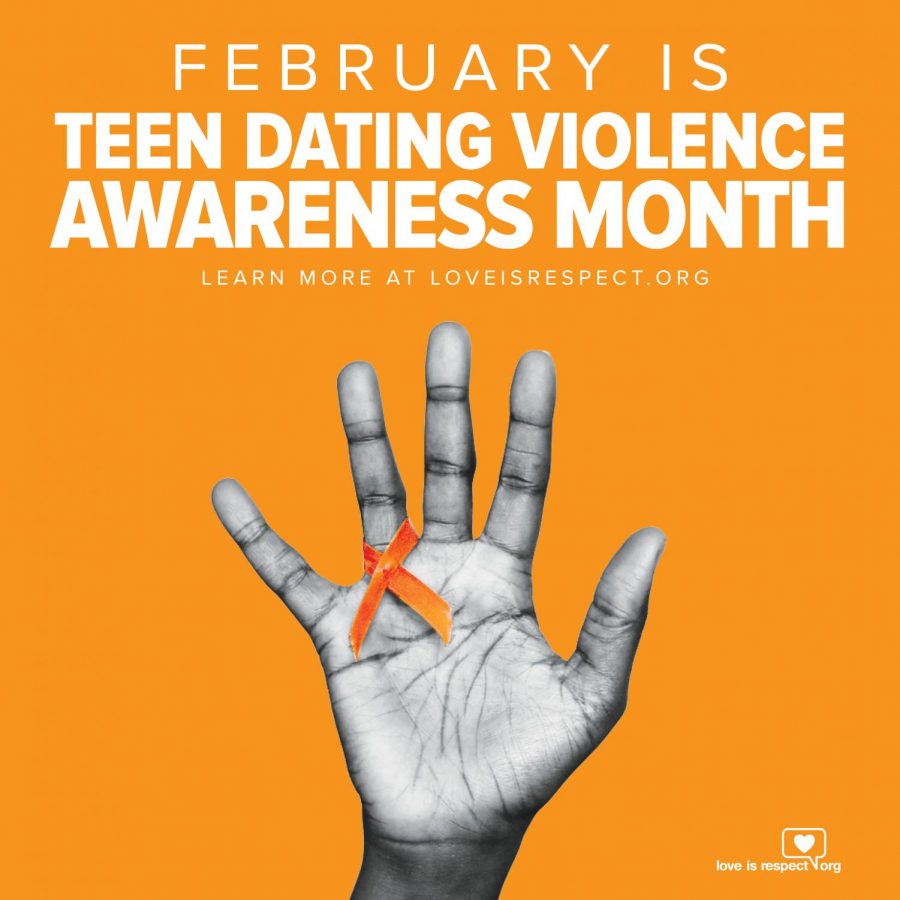Teen Dating Violence Awareness Month
February 28, 2018
Found in a study published by the CDC in their Morbidity and Mortality Weekly report, 1.5 million high school students in the United States experience physical abuse from their dating partners. 1.5 million students may not seem like a large amount due to the size of the study, but that number is 1.5 million too many. Teen dating violence is a true epidemic and is negatively affecting the lives of these students and those around them.
February is Teen Dating Violence Awareness Month and helps bring to light a problem that is truly hurting the high school community and the world. “Dating violence is any form of aggression, cohesion, or physical harm that one individual brings to another in an intimate or dating relationship,” expressed Mary Foley, the Executive Director of the Merryman House Domestic Crisis Center in Paducah, Kentucky. Dating violence doesn’t have to match this description perfectly, it could take on many different forms. “I think anytime one person tries to take power control from another in a destructive way, whether that’s through intimidation and threats, whether that’s through physical violence, sexual violence, intimidation and fear, I think those things are all captured in that idea of teen violence.”
Violence in an intimate relationship can negatively impact the lives of those who are victimized by the act. When you begin a relationship, you form a special kind of trust with your partner, and when your partner begins to hurt you physically or emotionally, it can become challenging. When I spoke to an anonymous victim they explained that you want to believe in them and that they will get better but that can be hard. “I was scared that he was going to escalate and harm me more than he already had,” they expressed.
Along with being hurt emotionally and physically in the present, a negative dating experience in the present could lead to negative experiences in the future and how you expect future relationships to be. “[Dating violence] affects teens long term by how they learn how to be or not be in a relationship, maybe their idea of what’s healthy becomes distorted, not to mention physical danger and psychological harm,” stated Foley. When we have these negative experiences as a teenager, it starts to, as stated by Foley, “map“ the way we think about what a relationship is and how they work. When we have that negative dating experience and don’t reach out for help, that idea could become what the victim believes to be a healthy relationship and could lead to future intimate relationship violence.
How do you know if you are in a dating violence situation? Well, a) does your relationship with your partner match the dating violence definition, and/or b) does your relationship feel right? “If something doesn’t feel right, it’s most likely not right,” Foley remarked. If something in your relationship doesn’t feel like it belongs, such as aggression or physical violence, then something probably isn’t right. Realizing you are experiencing a dating violence situation can be difficult. But once you finally come to terms with what is happening in your relationship, then is the time to seek help.
The first thing you might want to do is simply talk it out with someone. Find someone you trust; a teacher, a friend, a parent, anyone who you think will let you talk things through and help you in the best way possible. From there, a variety of organizations and people who are willing to help you find the best solution to getting out of this relationship are available. To sum that up into one sentence as expressed by Foley, “pay attention and value yourself enough to at least reach out for help.”
Now, if someone reaches out to you for help, don’t let them down or turn them away. This can be a challenging experience, but they need your help and believe and trust you the most. They wouldn’t ask you for help otherwise. So what should you do? “The first thing that I tell people is that it’s about some magic thing that we say or do,” Foley expressed. “The first thing that someone else needs to do is listen. Listen. What does that person see as the obstacle to getting out of the relationship?” From there, you can determine who or where you should reach out to. If that means talking to a parent or reaching out to an organization such as Merryman House Domestic Crisis Center, do it. They need your help.
This is a true issue that we all can step in and help in with. Though it may take some time to really help end this crisis, it all ends as one victim at a time recovers from these negative experiences. In the words of Mary Foley, “leaving an abusive relationship is not an event, but a process.”
If you would like to learn more about the Merryman House Domestic Crisis Center, visit their website at merrymanhouse.org. If you or someone you know is in a domestic crisis situation and are in need of help, the crisis line is available 24 hours a day, 7 days a week by calling 1 (800) 585-2686 or (270) 443-6001.















